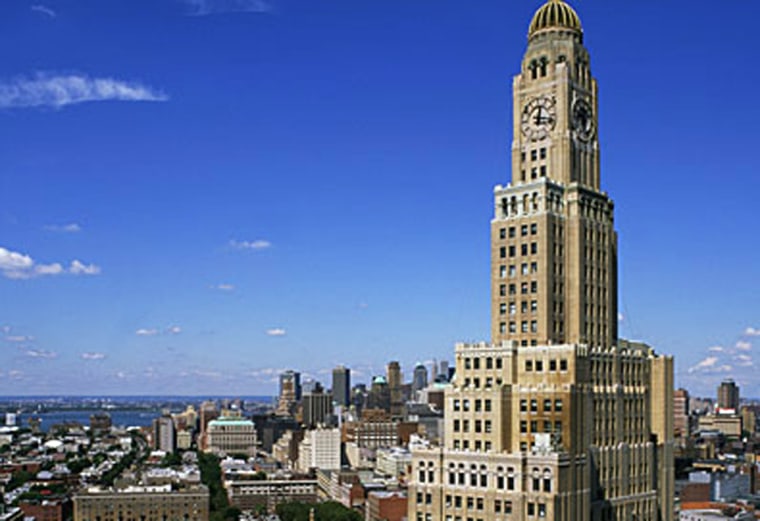In real estate, what's old is new again.
From New York City's Plaza Hotel to Ghirardelli Square in San Francisco, prominent properties such as luxury hotels, banks and even newspaper offices are being transformed into high-priced residential units.
The buyers get to live in storied and unique spaces. Some, like the Plaza, have long been plush and pampering. Others, such as the Sears Tower in Minneapolis or the former home of the San Francisco Chronicle, are being outfitted with upscale features — while desirable old details are kept.
The incentives for developers, faced with increased construction costs and a shortage of high-quality space, are many. They can save money and time by starting with existing buildings. In some cases, they can get federal and local tax breaks by transforming defunct industrial properties. And whether they work with officially landmarked buildings or structures that are simply well known, they can reap heaps of free publicity — especially desirable in a slower real estate market. A new residential building in midtown Manhattan might not make ripples, but when New York's Stanhope Hotel goes co-op, it generates headlines.
"There has been an increase in it in the last year or two," says Peter Brink, senior vice president of programs for the National Trust for Historic Preservation. "But it is [by] no means a new idea. Originally, it was driven largely by people who had a real sense of wanting something special in terms of high ceilings and thick walls."
Those features remain selling points of recent conversions such as the 440,000-square-foot Armstrong Cork Building in Pittsburgh and Des Moines' Standard Glass & Paint Co. into loft units. With expansive living spaces and windows that often larger than those found in new buildings, the projects are popular with buyers eager for character and the chance to live in a unique — and hip — setting.
"Most of the conversions that we are doing are in buildings that have incredible spaces because they were built as department stores or had uses which required a very different kind of environment," says John Cetra, executive vice president of New York-based architectural firm CetraRuddy. "The opportunity to create soaring spaces is amazingly different from the new buildings."
Instead of the standard 9-foot ceilings, Cetra says, these buildings have ceilings heights of up to 12 feet. The column bays are often 20 feet, as opposed to the more common 13 feet, and floors reach depths of 85 feet, 20 more than what's normally found.
In a recent project he completed at 655 Sixth Avenue in Manhattan, a turreted building that used to house the Hugh O'Neill Dry Goods Store, each apartment has a 16-foot-wide round corner space with wrap-around windows.
In addition to old-world details, many conversions also offer modern amenities such as gyms, deluxe kitchens with state-of-the-art appliances and concierge services.
But it's not only residents that win.
"It's a less expensive undertaking if you are not paying to demolish the property and start over," says Richard Southwick, director of historic preservation and partner in the architectural design firm of Beyer Blinder Belle, which has offices in New York, Washington, D.C., and Beijing. "Just pure dollars and cents, you already have a building, and you are making relatively modest modifications."
What's more, developers receive tax credits on landmarks they refurbish. The National Park Service's Federal Historic Preservation Tax Incentives program gives investors a 20 percent tax credit on the cost of renovating an historic building. And 30 states offer investors tax breaks while the building solicits tenants.
Still, for all its pluses, converting a landmark building is no walk in the park. Architects must abide by strict zoning clauses and get approval from the local landmarks commission before doing a renovation. Because of housing codes that dictate the amount of light and natural ventilation an apartment must have, some developers, impeded by large spaces with a low window ratio, end up building a large well down the center to allow for more open-air access.
In the end, though, if developers can unload these properties in a tight market, it appears the time and expense is worth it.
“In today’s market,” says Deborah Grubman, senior vice president at Corcoran, who, with Sharon E. Baum, also a senior vice president, is the listing agent for the Stanhope Residences, “I think that anything that you offer that makes one property stand out from another, whether a view or great space or a landmark building, will appeal to somebody. These are beautiful buildings in strong locations. Every advantage you have and anything that can be seen as a plus helps you sell.”
